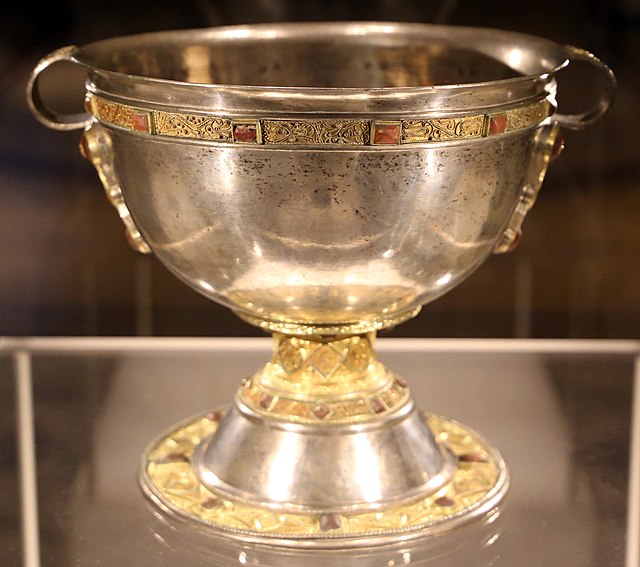The Derrynaflan Chalice is an 8th- or 9th-century chalice that was found as part of the Derrynaflan Hoard of five liturgical vessels. The discovery was made on 17 February 1980 near Killenaule, County Tipperary in Ireland. According to art historian Michael Ryan the hoard "represents the most complex and sumptuous expression of the ecclesiastical art-style of early-medieval Ireland as we know it in its eighth- and ninth-century maturity." The area known as Derrynaflan is an island of pastureland surrounded by bogland, which was the site of an early Irish abbey. The chalice was found with a composite silver paten, a hoop that may have been a stand for the paten, a liturgical strainer and a bronze basin inverted over the other objects. The group is among the most important surviving examples of Insular metalwork. It was donated to the Irish State and the items are now on display in the National Museum of Ireland.
Derrynaflan Chalice
Detail
Derrynaflan Paten
Detail
A chalice or goblet is a footed cup intended to hold a drink. In religious practice, a chalice is often used for drinking during a ceremony or may carry a certain symbolic meaning.
Chalice in the vestry of the Ipatevskii Monastery in Kostroma. Photographed by Sergey Prokudin-Gorsky in 1911
Fresco of a female figure holding a chalice at an early Christian Agape feast. Catacomb of Saints Marcellinus and Peter, Via Labicana, Rome
Chalice with Saints and Scenes from the Life of Christ
Silver chalice in the museum of the Romanian Orthodox Archbishopy of the Vad, Feleac, and Cluj








